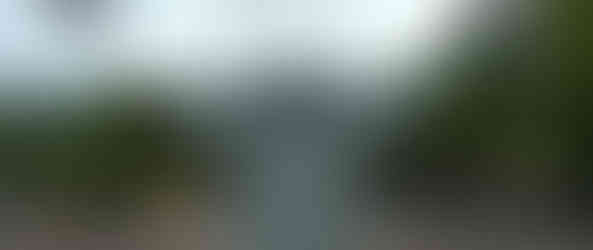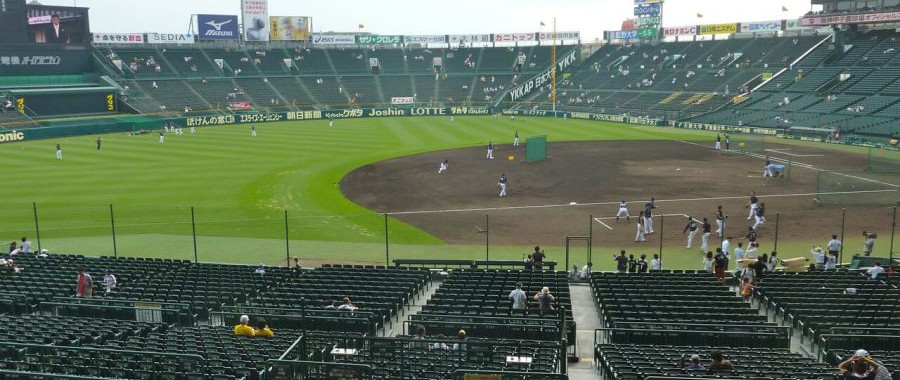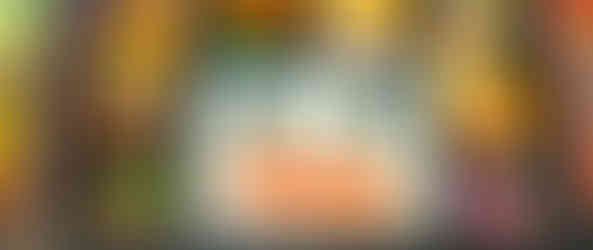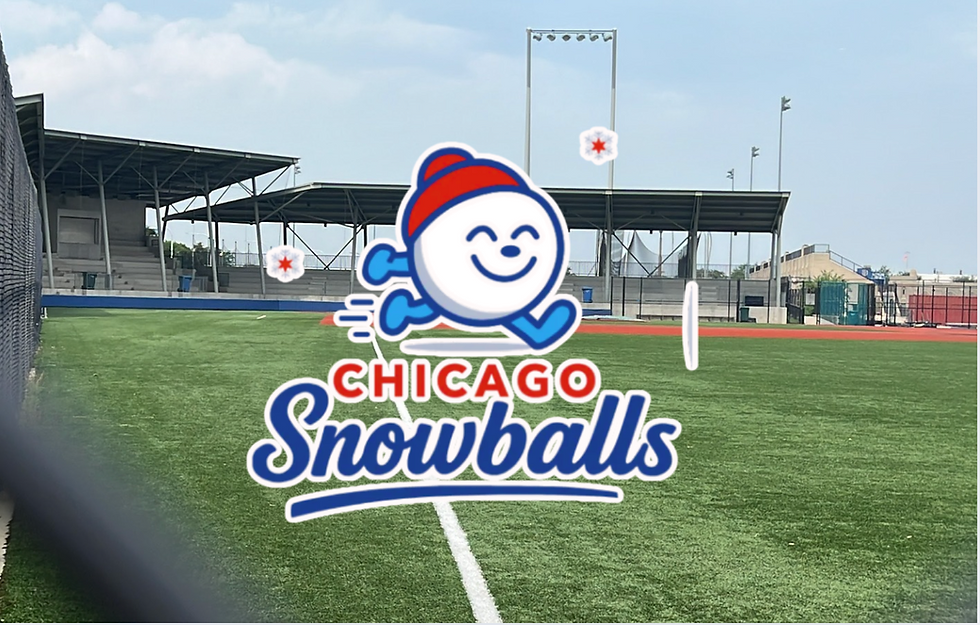Koshien Stadium - Hanshin Tigers
- Sean MacDonald

- Jul 7, 2013
- 9 min read
Updated: Jul 29
Photos by Sean MacDonald , Stadium Journey
Stadium Info FANFARE Score: 4.57
Koshien Stadium 1-82 Koshiencho Nishinomiya, Hyogo 663-8152 Japan
Year Opened: 1924 Capacity: 47,757
Earning Its Stripes
Hanshin Koshien Stadium is Japan’s most famous stadium – not because the Hanshin Tigers play here, but because it hosts two high school baseball tournaments every year. Both tournaments are known simply as “Koshien,” and it is every Japanese boy’s dream to play a game at the stadium. The spring invitational tournament takes place in late March and early April, just as the Nippon Baseball League season kicks off, while the summer competition, which features a team from each prefecture, is played through the middle two weeks in August. The high school games take priority, so the Tigers have to play on the road during the tournaments (although some home games are scheduled for the Kyocera Dome in Osaka).
In fact, the stadium was built in 1924, specifically to host the high school tournaments. This makes Koshien the oldest ballpark in the NPB, beating Jingu Stadium by two years, even though the Tigers didn’t start to use it until 1936. By the 2000s, though, it was in need of an overhaul, especially after the devastating earthquake in 1995. The last game I saw there in 2006 was painful since the seats were so cramped, having been designed for the average Japanese man in 1924. Thankfully, the powers that be recognized this and instituted a comprehensive renovation program between 2007 and 2010 that completely reshaped the inside of the park, while leaving the iconic ivy and arches untouched outside. Capacity dropped from 53,000 in 2003 to 47,757 and the new seats were slightly bigger and more comfortable. This change vaulted Koshien to the top of the NPB stadium rankings, since the fans and the atmosphere were already the best in the country.
(Note: exchange rates are as of the time of this posting, August 2013.)
Food & Beverage 5
Along each concourse are dozens of concessions that provided the biggest surprise for me. Not the number of concessions itself, but the variety and quality. In general, eating options at Japanese ballparks are much more diverse than what you get back home, and healthier as well, but often the food is just average. Not so at Koshien, where everything I tried was superb.
I started with a kushiage shumai: that’s four Chinese dumplings fried and put on a skewer. With a touch of mustard, it was fantastic and a bargain at just ¥300 ($3.10). Then, I had a large mango kakigori, which is shaved ice covered with mango juice and even a few pieces of the fruit. It was perfect for such a hot and humid day, and it took me nearly half an hour to finish, well worth the ¥400 ($4.10). My main meal was a beef and kimchi (spiced cabbage) combo with a cold draft beer, and it was just ¥1,000 ($10.25) and surprisingly tasty. It would take the rest of the review to go through the entire list of food options, but the most popular were the jumbo yakitori sticks at ¥350 ($3.60) each. Some other choices include a Pizza-La Express stand if you are hankering for a few slices Japanese style (potato and mayonnaise are often toppings), and KFC if you need your American grease fix, but I strongly recommend you stay with the truly Japanese selections.
One other thing at Koshien is that current and past players have a dish that they “sponsor”. Try Makoto Imaoka’s cold dipping noodles (much better than it sounds) or Matt Murton’s pork bowl with crab meat (again the English description does it no justice).
Do take your time to wander throughout the concourse and study the offerings. Note that Japanese ballparks are always changing their menu, so what is here one year may be gone the next, but if my visit was any indication, you should come hungry when you visit Koshien.
Atmosphere 5
Koshien has, without a doubt, the best atmosphere at any Japanese ballpark. The fans are jammed in, there is not an empty seat in the building, and the cheering is long and loud when the Tigers are at bat. Gates open 2 hours before game time, and you are advised to get there then, so as to fully enjoy the ambiance of the stadium. When you first enter and the ballpark is relatively empty, you will be amazed at the aesthetic perfection as the Kelly green seats combine the with dark, dirt infield and grass outfield to induce a feeling of complete serenity. This doesn’t last long though, as fans slowly surround you, and the buzz increases as first pitch approaches. Use this time to load up on food, as you want to be in your seat at the scheduled starting time, as Japanese baseball begins on the dot. The top half of the first is a prelude as the visiting fans are too few in number to make much noise, but when the Tigers take to the plate in the bottom of the first, their fans explode, and for the rest of the game, Koshien is a madhouse.
To add to the proceedings, there are beer girls plying the aisles from well before game time, Although their constant shouts of “Beeru ikaga desu kaaaaaaaaa” (“How about a beer?”) resembles that of the cicadas that dominate Japanese gardens in the summer, their smiling persistence in performing such a difficult job in stifling hot weather is highly admirable.
There are a couple of mascots, and songs are sung throughout the game. After the 5th inning, while the field is being cleaned, the mascot dance show entertains fans for those otherwise dull five minutes. In the 7th inning, fans release balloons as they do at nearly every Japanese ballpark, but elsewhere is not as amazing as it is here, where nearly every fan has at least two balloons. Imagine 80,000 noisy balloons rising through the air for just a few seconds, before giving up and spinning back to earth. If you want to participate, you can buy your own balloons at any team store.
Neighborhood 4
Koshien is located in Nishinomiya City, which is actually in Hyogo Prefecture rather than Osaka. The immediate vicinity contains a McDonalds and a few other small restaurants, but you are better off returning to Osaka to party.
There are literally tens of thousands of restaurants and bars, with Namba station being the center of it all, if you are looking for clubs and a late night. The Hanshin line (yes, the owner of the Tigers also owns a major railway) terminates in Umeda, which is slightly quieter, as it is more of a business district. One recommended spot is a wine and tapas bar called Tucusi. The bartender who served me told me he was a big Tigers fans, and they had some great shochu (colloquially referred to as a type of whisky, but entirely different), so it gets a mention here. It is a bit of a walk from Umeda station, but it will definitely provide a unique experience if you are visiting Japan.
If you are looking for something less esoteric, try the Hub Pub chain, with branches throughout the city. Their attempt at being a true English pub is somewhat hit-and-miss, but prices are cheap, and you can usually chat up a local here.
Fans 5
Tigers’ fans are notorious for their silly. and sometimes outrageous, behavior. When the team, a perennial loser, won the Japan series in 1985, fans gathered at a bridge over Dotonbori, the canal that runs through downtown Osaka. When each player’s name was yelled, a fan resembling that player jumped in the canal. When team star Randy Bass was announced, the fans kidnapped a statue of Colonel Sanders from a nearby KFC and threw it in Dotonbori in effigy, as both Bass and the colonel are bearded and non-Japanese. The statue was not found for over 20 years and the Tigers have not won the Japan Series since, leading many to believe in the “Curse of the Colonel”.
I have always had a great time at Koshien, and being a foreigner helps, especially when one of the non-Japanese players hits a home run. Even if you are from America and the player is from Venezuela, you are both gaijins and the fans will clap you on the back as if you knocked the ball out of the park. Don’t take offense, as none is intended. Their passion is their team, and you have to respect it.
The cheering section is also very loud, and the poor visiting fans are relegated to a small section in the top of left field, where their cheers die on the wind.
The team is no longer the laughingstock of the Central League, but the fans have not become arrogant or annoying in any way. They love their Tigers, and after enjoying a game with them, you probably will too.
Access 3
Koshien is easy to get to. The Hanshin main line goes straight from Umeda station, which is right in the center of the city. Avoid the local train, and take an express instead; the Koshien stop is just 12 minutes away. You can usually spot Tigers fans in their distinctive yellow and black paraphernalia, and following them to the correct train is a good bet. When you get to Koshien station, make sure to buy your return ticket on the way out, as the machines will be very crowded after the game. If you are staying in the Kansai area for a number of days, consider a transit card that can be used at any train line throughout the region; at ¥2,000 ($20.50), you will be able to use it for two or three days, depending on your itinerary, and you don’t have to queue repeatedly for single journey tickets.
As you exit the train station, you might have a bit of trouble finding the stadium at first, as it is blocked by two highways that pass right in front of it. Only those distinctive arches are visible, but once you walk under the overpasses, you will see this beauty.
After entering the stadium, you will notice the concourses are rather narrow, but this didn’t prove problematic, because there are three levels, and fans are guided to the best level for their seat.
You can walk around the infield concourse without a problem, but you cannot get to the outfield from there or vice versa, which is a problem if you are looking to take photographs from all angles. As well, you can only enter the seating area through the proper aisle shown on your ticket. My aisle was 3-L, which meant the 3rd floor, aisle L. It’s not that hard to figure out.
Seats are still a bit tight if you are a larger individual, and when there are drink holders attached to the arms, getting in and out can be a hassle for those in your row. Thankfully, most rows are just 8 seats long, so you won’t inconvenience too many when you need to go grab some grub.
Return on Investment 5
There are just three types of seats available to the general public. The first are those located in the infield, known as Ivy Seats and costing ¥4000 ($41). These seats come with drink holders and seat backs and are a better option, considering the average Japanese baseball game takes well over 3 hours. I was fortunate to get a seat in row 23 just past third base, which was high enough to avoid the fencing and give me a clear view of home plate.
The second group of seats is the Alps seats, so named for the steep incline. At ¥2,500 ($25.60), they are cheaper, but the seats have no back, and you are down in the corners. Finally, there are the outfield seats, which are ¥1,900 ($19.50). The experience of sitting in the outfield cannot be described; you will be surrounded by Tigers fans cheering all game long. I prefer the relative comfort of the Ivy Seats, which are closer to the action, but if you want a unique experience, try sitting in the outfield instead. These tickets are usually easier to get, as well.
Although the price may be a bit higher than average in Japan, the experience is the best you can get, which is why this category gets full marks.
Extras 5
There is a Koshien museum that is open before the game and costs a mere ¥500 ($5.10). Its focus is mainly on high school baseball, though, so it might not be the most interesting spot if you are a tourist, but you will certainly understand the passion the Japanese feel for the game. Stadium tours are also offered at certain times.
There are several plaques on the outside walls that illustrate the history of the stadium. Take time to walk around the entire outside. Babe Ruth played here in 1934 on a barnstorming tour of Japan, and there is a plaque dedicated to that event, as well.
The arches and Wrigley Field-inspired ivy that make the outside of this ballpark so unique deserve another point.
There is a commemorative tower in front of the museum that notes the summer tournament has passed 90 years and the spring tournament 80.
I received a free Tigers’ jersey upon entering, allowing me to fit in with the masses.
Final Thoughts
With the exception of a relatively quiet neighborhood (easily fixed by returning to Osaka) and some minor problems with access, this is a perfect place to see a baseball game in Japan. From the first time you enter and see the famous field until the final pitch, you will be captivated by all you see. All Japanese ballparks offer the novice some memories, but Hanshin is simply the best. Even if you are in town during one of the high school tournaments, check out this stadium, as it celebrates its 90th birthday in 2014.

















Comments